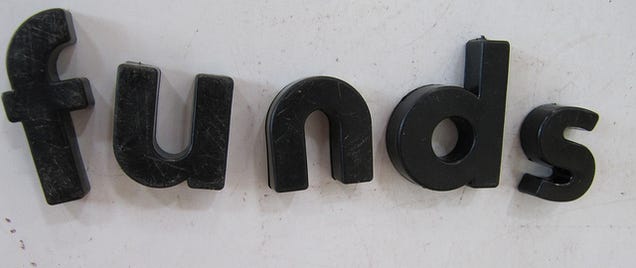
different ways to invest your money—mutual funds, CDs, real estate...the
list is seemingly endless. Here's our guide to all the different types
of investments and what they mean.You'll probably come across a handful of terms associated with your investments. We've listed a few of them below. These terms generally
refer to the actual stuff you're invested in, but, of course, they have specific definitions, too. They include:
- Assets: An owned resource expected to increase in value.
- Holdings: The specific assets in your investment portfolio.
- Portfolio:
Your "portfolio" refers to all of your investments, as a group.
Diversifying your portfolio means investing in a variety of assets. - Asset classes: A group of assets with similar characteristics. Generally, stocks, bonds and cash.
investments you own, lending investments, and cash equivalents. Here's
how different investments compare in each of these three categories.
Ownership Investments

that's expected to increase in value. Ownership investments include:
- Stocks: Also known as an equity or a share, a
stock gives you a stake in a company and its profits. Basically, you get
partial ownership of a public company. A large percentage of your
portfolio should probably be made up of stocks. - Real Estate: According
to Investopedia, any real estate you buy and then rent out or resell is
an ownership investment (though it can sometimes be classified as an alternative investment). By their terms, the home you own fulfills a basic need, so it doesn't fall under this category. - Precious objects: Precious
metals, art, collectables, etc. can be considered an ownership-type of
investment if the intention is to resell them for a profit. They also
fall under a separate category, "alternatives." More on that later. - Business:
Putting money or time toward starting your own business—a product or
service meant to earn a profit— is another type of ownership investment.
Lending Investments

repaid. You're sort of like a bank. Generally, these are low-risk,
low-reward investments. This means they're thought to be a safer
investment, but their return is usually low.
- Bonds: "Bond" is a more umbrella term for any
type of debt investment. When you buy a bond, you loan money to an
entity (a corporation or the government, for example) and they pay you
back over a set period of time with a fixed interest rate. Another big
chunk of your portfolio will probably be made up of bonds. - CDs: A
CD, or certificate of deposit, is a promissory note issued by a bank in
exchange for your money. You've probably seen your bank offer these.
They're a type of savings account, but they're a little different.
Instead of taking your money out at any time, you commit to leaving it
in the account for a set period. In return, they'll offer a higher
interest rate based on how long you invest in them.Savings accounts
can also be considered lending investments, if you think about it.
You're giving your money to a bank that loans it out. But your return is
usually pretty low (lower than the inflation rate), so most people
don't consider it a true investment. - TIPS: TIPS
are treasury-inflation protected securities. These are bonds backed by
the US Treasury, specifically designed to protect against inflation.
When your TIPS investment matures over time, you'll get your principal
and interest back, both indexed for inflation. Bogleheads explains how they work in a bit more detail.
in your portfolio to balance things out. The SEC has a helpful beginner's guide to balancing your portfolio.
Cash Equivalents

cash. Cash equivalents are investments that are "as good as cash," as
Investopedia puts it. This might be a simple savings account. It might
be a money market fund. A money market fund is really a type of lending
investment, but the return is so low, it's considered to be a
cash-equivalent investment.
We'll talk about funds more in a bit, but first, let's check out another way to categorize investments—alternatives.
Alternatives

categorized as ownership, lending and cash. Those categories are broad
descriptors, but they're helpful in explaining how different types of
investments work.
But investing companies break things down a little differently. They
go by asset class: stocks, bonds, cash and alternatives. We already know
about stocks, bonds and cash—the most traditional ways to invest. In
terms of asset class, alternatives are everything else. Consequently,
much less of your portfolio should be invested in them.
Also, it's easy to categorize some investments alternatives, because they could actually be considered ownership or lending investments, depending on how they're bought. But let's take a look at some examples.
REITs: Real Estate Investment Trusts, or REITS, are another way to invest in real estate. Instead of buying your own property, you work with a company that earns profit from their own real estate investments.
Really, an REIT can be an ownership investment or
a lending investment, depending on what type you buy. You can buy an
REIT that gives you a share in the real estate itself. This would count
as an ownership investment. Investopedia explains
When you buy a share of a REIT, you are essentiallyBut you could also invest in the mortgage of the real estate, which would make it a lending investment.
buying a physical asset with a long expected life span and potential for
income through rent and property appreciation.
Venture Capital: This is money you give to a startup
or small business, with the expectation that it will grow, and you'll
get a return on that money. A lot of times, venture capitalists become
partners in the company, owning part of a its equity and getting a say
in business decisions. In this way, they can be thought of us ownership
investments.
Commodities: Investing in a commodity is investing
in some sort of resource that affects the economy. Oil, beef and coffee
beans are all different types of commodities. The contracts you use to
buy these goods are called Futures Contracts, and you have to fill them
out through a National Futures Association broker, MarketWatch explains.
Precious Metals: Like we mentioned earlier, metals
and collectables are, technically, ownership investments. You own the
gold you're buying, for example. But it's not a stock or a bond, so
most people refer to it as an alternative.
Funds

They're not specific investments, but a general term for a group of
investments. The Guardian defines investment funds as:
...a pool of money which is professionally managed toBasically, an investment company picks a collection of similar assets
achieve the best possible return for investors. When money is paid in
the manager uses it to buy assets, typically stocks and shares.
for you. It can be a group of stocks or a group of bonds. Or, the fund
can be even more specific—there are funds made up of all international
stocks, for example. In return for their curating your investments,
you'll pay a fee, or an "expense ratio." But they aim to be a more
convenient investment, with picks that provide a better return than
anything you would probably pick on your own.
Let's check out the different terms associated with funds.
Mutual Funds: A mutual fund is, basically, another
term for investment fund. To provide a more formal definition, here's
how Investopedia explains it:
An investment vehicle that is made up of a pool of fundsIndex Funds: A type of mutual fund meant to mirror the return of a specific market, like the S&P 500. Get Rich Slowly offers a thorough piece on index funds, and they explain them as:
collected from many investors for the purpose of investing in securities
such as stocks, bonds, money market instruments and similar assets.
Mutual funds are operated by money managers, who invest the fund's
capital and attempt to produce capital gains and income for the fund's
investors. A mutual fund's portfolio is structured and maintained to
match the investment objectives stated in its prospectus.
Index funds are mutual funds, but instead of owning maybeBecause they're meant to mirror the market, index funds are
twenty or fifty stocks, they own the entire market. (Or, if it's an
index fund that tracks a specific portion of the market, they own that
portion of the market.) For example, an index fund like Vanguard's VFINX, which attempts to track the S&P 500 stock-market index,
tries to own the stocks in its target index (the S&P 500, in this
case) in the same proportions as they exist in the market.
"passively managed", which means there isn't a team of investors
constantly analyzing, forecasting and adjusting the assets in the fund
(known as active management). As a result, they tend to have lower expense ratios, which means you keep more of your money.
Exchange Traded Funds (ETFs): These are very similar
to index funds in that they're meant to track an index, or a measure of
a specific market. The biggest difference is the way they're traded.
ETFs can be traded like stocks, and their prices adjust like stocks
throughout the day. Mutual and index funds don't work this way. ETF
Database further explains:
The biggest difference between these two products is theHedge Fund: Hedge funds are like mutual funds, with a
frequency with which they are priced and traded. Index mutual funds are,
after all, mutual funds, and as such they are priced once a day after
markets close. ETFs–including both active and passive ETFs–are priced
throughout the day, and can be bought or sold whenever the markets are
open.
few very important differences. First, they're not regulated by the
U.S. Security and Exchange Commission (SEC). They're also considered
riskier than regular mutual funds, because their assets can include a
broader range of investments. Also, they often use borrowed money to
invest, as BarclayHedge explains. To learn more about hedge funds, check out Investopedia's full explanation of them.
With so many terms associated with investing, knowing what exactly to
invest in can seem complicated. But once you organize these terms into
categories, they're actually pretty easy to understand.
Photos by: Tina Mailhot-Roberge, Tax Credits, bfishadow, Ron Wolf and Howard Lake.
He is no scam,i tested him and he delivered a good job,he helped me settle bank loans,he also helped my son upgrade his scores at high school final year which made him graduate successfully and he gave my son free scholarship into the college,all i had to do was to settle the bills for the tools on the job,i used $500 to get a job of over $50000 done all thanks to Walt,he saved me from all my troubles,sharing this is how i can show gratitude in return for all he has done for me and my family
ReplyDeleteGmail; Brillianthackers800@gmail.com
Whatsapp number; +1(224)2140835